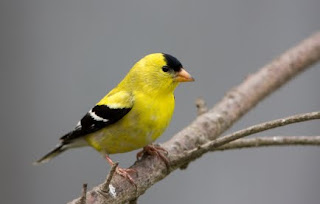I was just reviewing the results of the Wild Bird Feeding Industry's
Project Wildbird study. This research project was a landmark study of seed and feeder preferences of wild birds in the United States and Canada that began in 2005 and wrapped up on December 2008. What is interesting about the study is that scientists have identified the most bird preferred types of bird seed. They have also identified which birds are most plentiful at backyard feeders in North America.
The study showed that the most preferred types of bird seed were: black-oil sunflower, chopped sunflower meats (we call these fine and medium sunflower chips), nyjer seed, and white millet. Of these, black oil sunflower in shell attracted the most species of birds and the highest number of birds. So if your goal is to attract many different types of birds and a high number of them then black oil sunflower should be a main ingredient in your bird seed mixes.
The study also tracked the most common birds at backyard feeders. Those were in order of most common to less common: House Sparrow, House Finch, American Goldfinch, Brown-headed Cowbird, Northern Cardinal, Black-capped Chickadee, Mourning Dove, Pine Siskin, Common Grackle, and Purple Finch. Now my own experience is slightly different - as I said in a previous posting I rarely get cowbirds in my yard and Northern Cardinals are not usually found in Alberta. In my back yard the most common birds are probably robins but of course robins don't typically eat at feeders. From my bird feeder perspective I would say the most common bird is the House Finch, redpolls (depending on season), goldfinches, siskins, grackles and Northern Flickers (who eat my suet and some of the bird seed). I see the odd nuthatch but they are pretty rare, the occasional jay and crow, and I have yet to see a chickadee in my current backyard.
I am doing a poll of my facebook friends - what are the most common birds at your feeders this spring? Drop a comment on the facebook wall or email me at seed@chinridge.com

